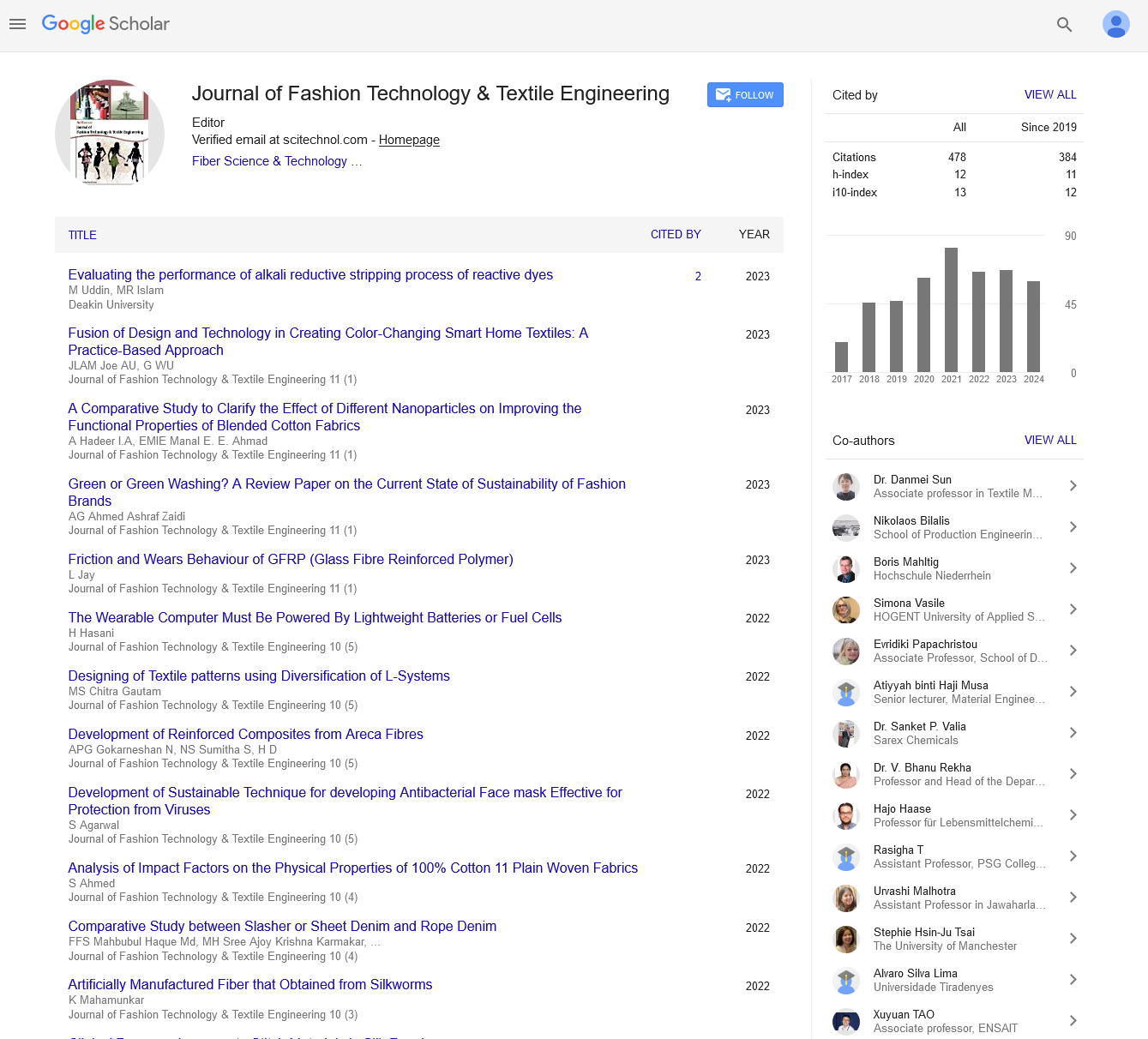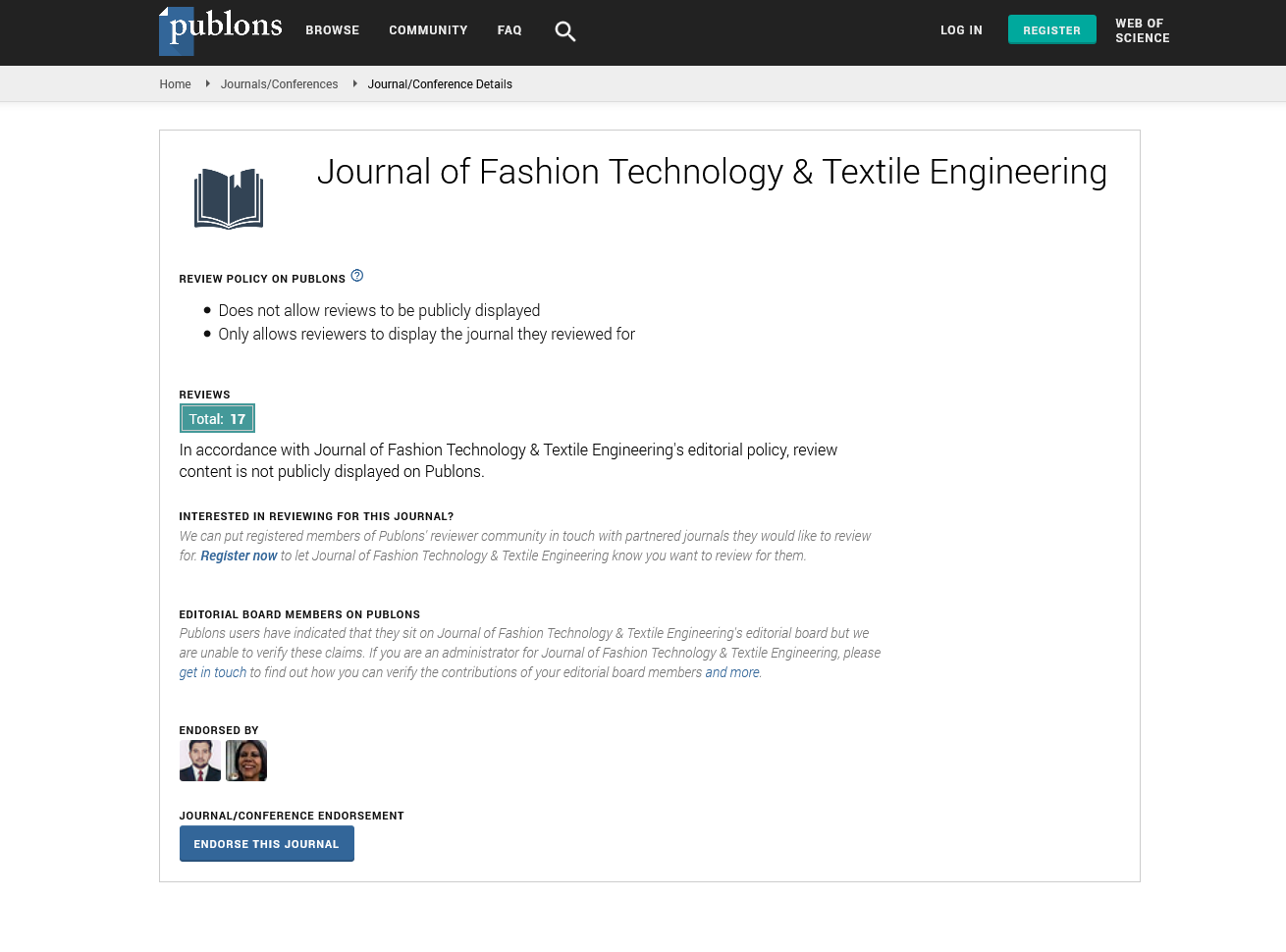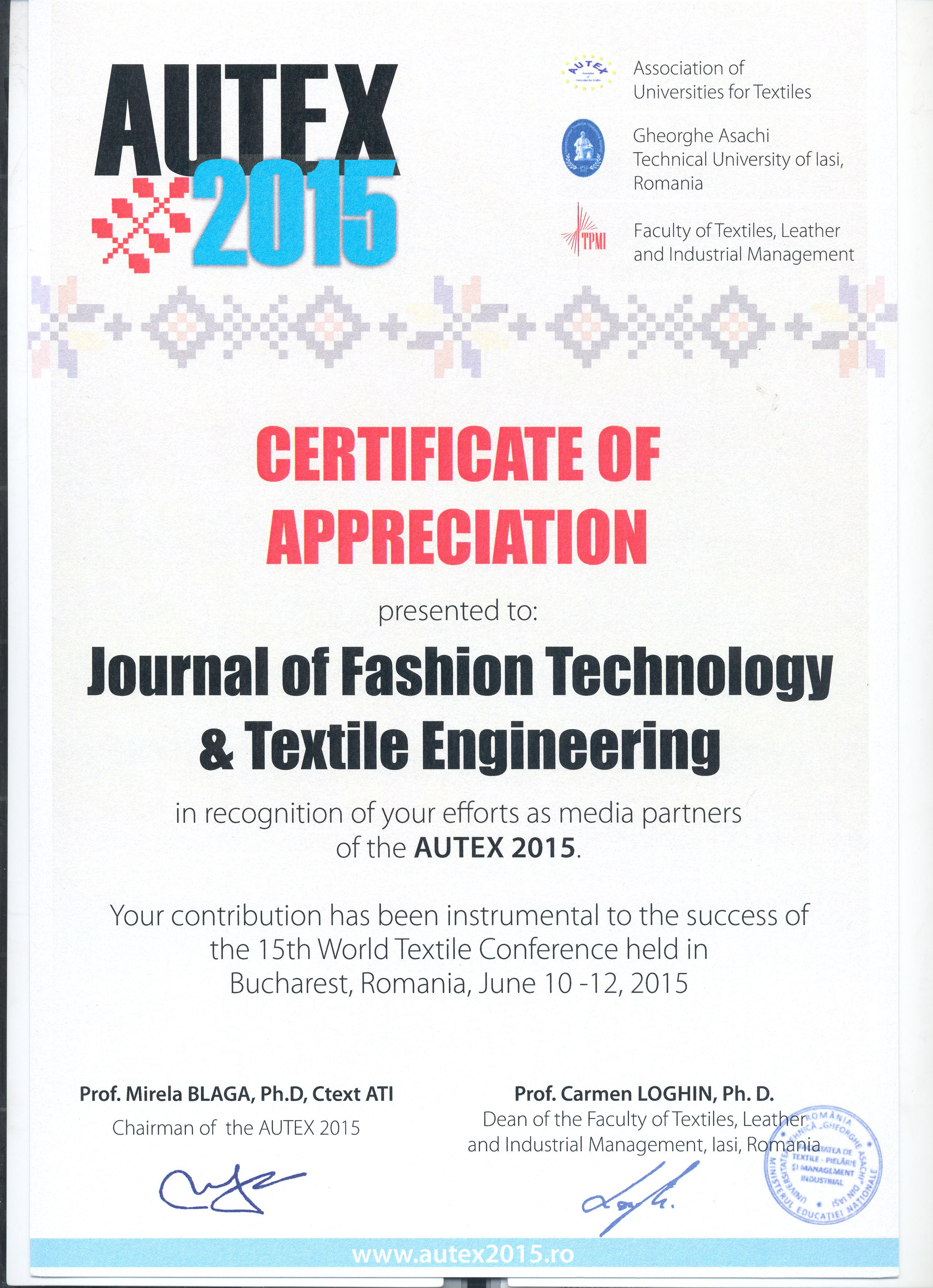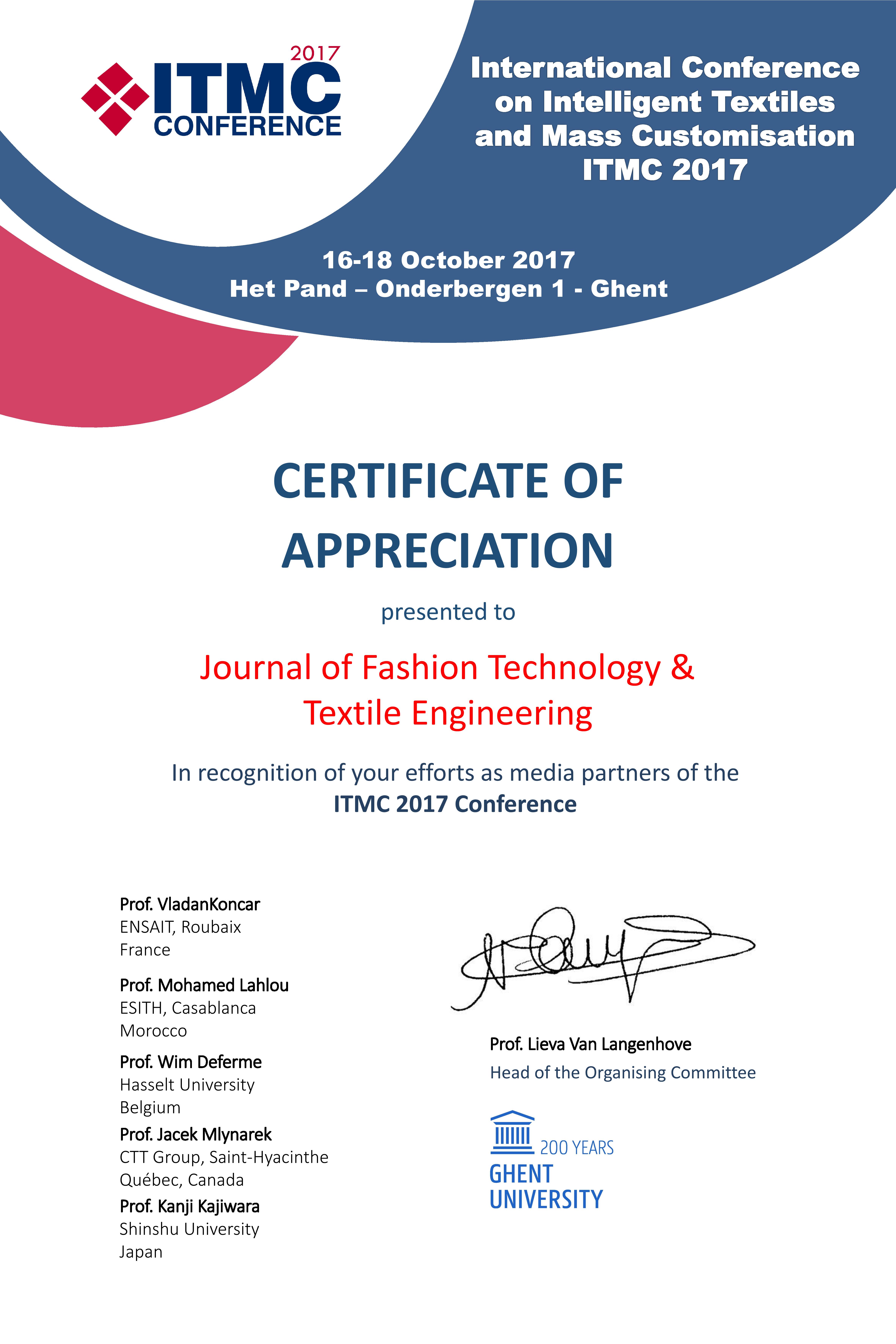Perspective, J Fashion Technol Textile Vol: 12 Issue: 5
Revitalizing Ancient Weaving Techniques through Modern Textile Engineering
Chen Wei*
1Department of Textile Engineering, Donghua University, Shanghai, China
*Corresponding Author: Chen Wei,
Department of Textile Engineering, Donghua
University, Shanghai, China
E-mail: chen_weii287@gmail.com
Received date: 23 September, 2024, Manuscript No. JFTTE-24-152111;
Editor assigned date: 25 September, 2024, PreQC No. JFTTE-24-152111 (PQ);
Reviewed date: 09 October, 2024, QC No. JFTTE-24-152111;
Revised date: 17 October, 2024, Manuscript No. JFTTE-24-152111 (R);
Published date: 25 October, 2024, DOI: 10.4172/2329-9568.1000373.
Citation: Wei C (2024) Revitalizing Ancient Weaving Techniques through Modern Textile Engineering. J Fashion Technol Textile 12:5.
Description
Ancient weaving techniques developed with extraordinary skill and precision over centuries, are valued for their unique textures and complex patterns. These methods display an artistry that goes far beyond the surface, reflecting the cultural heritage and stories embedded in each thread. Today, with the advance of textile engineering, there is a renewed interest in stimulating these timehonored techniques. This fusion of tradition and technology not only honors ancestral craftsmanship but also brings forth innovations that suit modern preferences and functional needs. The process of weaving, traditionally conducted with handlooms and natural dyes, required unique skill to produce patterns with natural fibers like cotton, silk and wool. Indian techniques such as the ikkat, which uses a complex dyeing process to produce patterns before weaving and the brocade, which incorporates rich threads for complex designs, are important for their complex craftsmanship. However, the lengthy production times and high costs associated with these methods have led to a decline in their popularity over the years, particularly as massproduced textiles became widely available.
Textile engineering has opened new opportunities for bringing these methods back to modern wardrobes, allowing artisans and designers to reimagine these techniques. Today, technologies such as automated looms and digitally controlled dyeing systems make it possible to restore complex patterns with reduced labor and enhanced precision. By integrating traditional methods with automated processes, textile engineers can replicate the accuracy of handwoven pieces, improving both speed and consistency while preserving the spirit of the original designs. One challenge in adapting ancient weaving techniques for modern uses is achieving balance between modern practicality and authenticity. For instance, handloom fabrics are often valued for their unique, uneven textures a characteristic that machine production initially struggled to replicate. Textile engineers now use software that simulates these small irregularities, allowing fabrics to retain a more organic look. Similarly, efforts are being made to use eco-friendly, modern dyes that impression the traditional types produced from natural sources like plants and minerals.
Another exciting development is the application on sustainable materials, which aligns well with ancient weaving practices that largely utilized natural, biodegradable fibers. The use of sustainable materials such as organic cotton and recycled fibers in weaving work to traditional practices but also provides to growing consumer demands for eco-friendly products. Textile engineers are also exploring alternatives to synthetic fibers that replicate the luxurious feel of traditional silks and wool, allowing these textiles to reach wider viewers.
To broaden their appeal further, many designers are integrating ancient weaving patterns into modern styles that resonate with modern fashion trends. By adapting traditional themes to newer outlines and textiles, they allow ancient designs to fit seamlessly into today’s wardrobes. For instance, the classic patterns from handwoven sarees are being reinterpreted in suits, dresses and even sportswear. Through this blending of cultural motifs and modern fashion, textile engineering is helping to sustain these art forms while also making them accessible to people from diverse backgrounds.
While technological adaptations have enhanced the reach and production of ancient weaving techniques, collaboration with artisans remains important. The knowledge held by skilled craftspeople provides insights that modern technology cannot replace. Many initiatives and partnerships have been established to encourage artisans to participate in the design and design process, blending traditional expertise with technological advancements.
Conclusion
Ancient weaving techniques are much more than simple textile processes they are cultural expressions passed down through generations. By inclusion these skills with modern textile engineering, open new possibilities that not only revive these methods but also give them relevance in today’s world. This renewal is contributing to the diversity and richness of the textile industry, providing consumers products that carry both aesthetic and historical significance. Through innovation that respects tradition, ancient weaving techniques are finding a new life in modern fashion, where they can be appreciated by a global audience for both their beauty and their heritage. This collaboration preserves a connection to the origins of these techniques, allowing for a continuous exchange of ideas that strengthens the bond between past and present.
 Spanish
Spanish  Chinese
Chinese  Russian
Russian  German
German  French
French  Japanese
Japanese  Portuguese
Portuguese  Hindi
Hindi 


